SE Oregon, Ranches and Craters
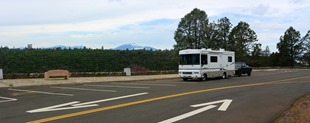 After we left the Pit River, we spent another hard-traveling day and worked our way up past Fall River Mills, then Alturas, Lakeview, and into Burns, Oregon. The northeastern part of California is a gorgeous area, nicely forested but still with an open, roomy feeling. It’s worthy of a longer visit — but we were Oregon bound, so we boogied on past. It was a stormy, lonely Wednesday in early May, well before the summer throngs. We stopped at a View Point and had the parking lot to ourselves. We just love the shoulder seasons.
After we left the Pit River, we spent another hard-traveling day and worked our way up past Fall River Mills, then Alturas, Lakeview, and into Burns, Oregon. The northeastern part of California is a gorgeous area, nicely forested but still with an open, roomy feeling. It’s worthy of a longer visit — but we were Oregon bound, so we boogied on past. It was a stormy, lonely Wednesday in early May, well before the summer throngs. We stopped at a View Point and had the parking lot to ourselves. We just love the shoulder seasons.
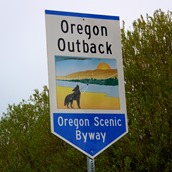
Headed up 395 alongside Goose Lake and past Lakeview, the land dried out and became more desert-like. It also became much more empty, with townships few, tiny, and far between. Very different from the string of towns along 299. Long stretches of highway were adorned only by the calm waters of Goose Lake, and later Lake Abert, plus an occasional band of pronghorn antelope watching curiously and cautiously from the desert scrub. The sign says “outback”, and it does indeed look and feel quite remote.
The four-day storm was true to forecast, and we plowed through light rain and thunderstorms for the entire day, finally winding up in Burns around 4PM. Just before closing, the local BLM office sold us a couple of really superb maps of the areas we intended to explore during this trip. If you ever end up exploring around the Burns area, these are must-haves. They are both from the Pacific Northwest Recreation Map Series:
- Steens High Desert Country
- Owyhee Canyon Country
They are huge, sturdy, dining-table-sized fold-out maps, and they cover in really good detail about 15% of the entire state of Oregon, right in the southeast corner.
Leaving Burns, we had an immediate destination issue. We wanted to explore the Steen’s Mountain area, and both the east and west sides are of equal interest. But the closer (west) side was still closed (the loop road), so we headed out for the more-distant east side, which is essentially a 35-mile-long rift escarpment. It was more than an hour away, but we would still have a bit of daylight to find a camp. It’s desolate out there – – we were glad we had topped off (plus our spare-gas cans) in Burns.
Ah, “the best-laid plans of mice and men”, indeed. Just past Crane on route 78, Karin spotted something interesting on the map. We snap-decided to detour over toward the Malheur Wildlife Refuge and Diamond Craters area. This is northwest of Steens, and although we could find no mention of any camping there, we decided to take our chances, maybe find a flat spot on some BLM land somewhere. This sort of extemporaneous “non planning” is some of what we like best about our un-structured way of traveling.
We wound our way out and southward down Lava Beds Road, and wow, it was all private ranch land. Beautiful, vast, untrammeled, but nowhere obvious to camp.
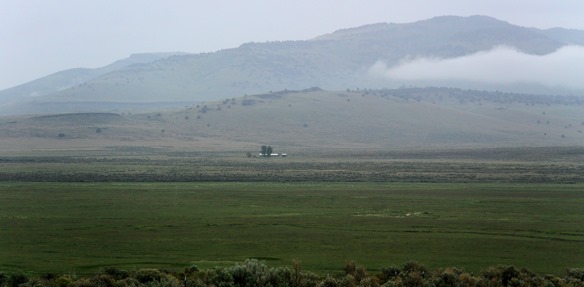
We had seen on the map a tiny dot called “Visitor Center”, and knowing that government-staffed agencies would be closed after 4PM, we figured our fall-back position would be their parking lot (and then maybe to get boosted out at 8AM the next morning).
Instead, we found ourselves on the receiving end of yet another serendipitous surprise. It turns out the the Visitor Center is privately owned, on private ranch land, and the owner was still open for business at 6:30 on a Thursday evening. We asked him how late he’d be open, and his answer was “until you and anyone else who comes through the door are finished looking around”. We wondered aloud where might be a nearby place to camp?
We had by pure chance stumbled into the hands of a kind and friendly gentleman, Dick Jenkins, rancher-musician-teacher and all-round gregarious host. He graciously offered us free overnight camping at a flat parking area off the entrance road. If we needed water (yes) or electricity (no), we were welcome to both at the Visitor Center, again with no charge. What an incredibly pleasant encounter. And on top of all that, we were even able to chat at length about current politics — without yelling or shooting at each other.
Just down the access road from the Visitor Center is a state historical site, Peter French’s Round Barn. It is in fact a horse corral, built for winter training and exercising the considerable herd of ranch horses owned by the late-1800’s cattle baron.
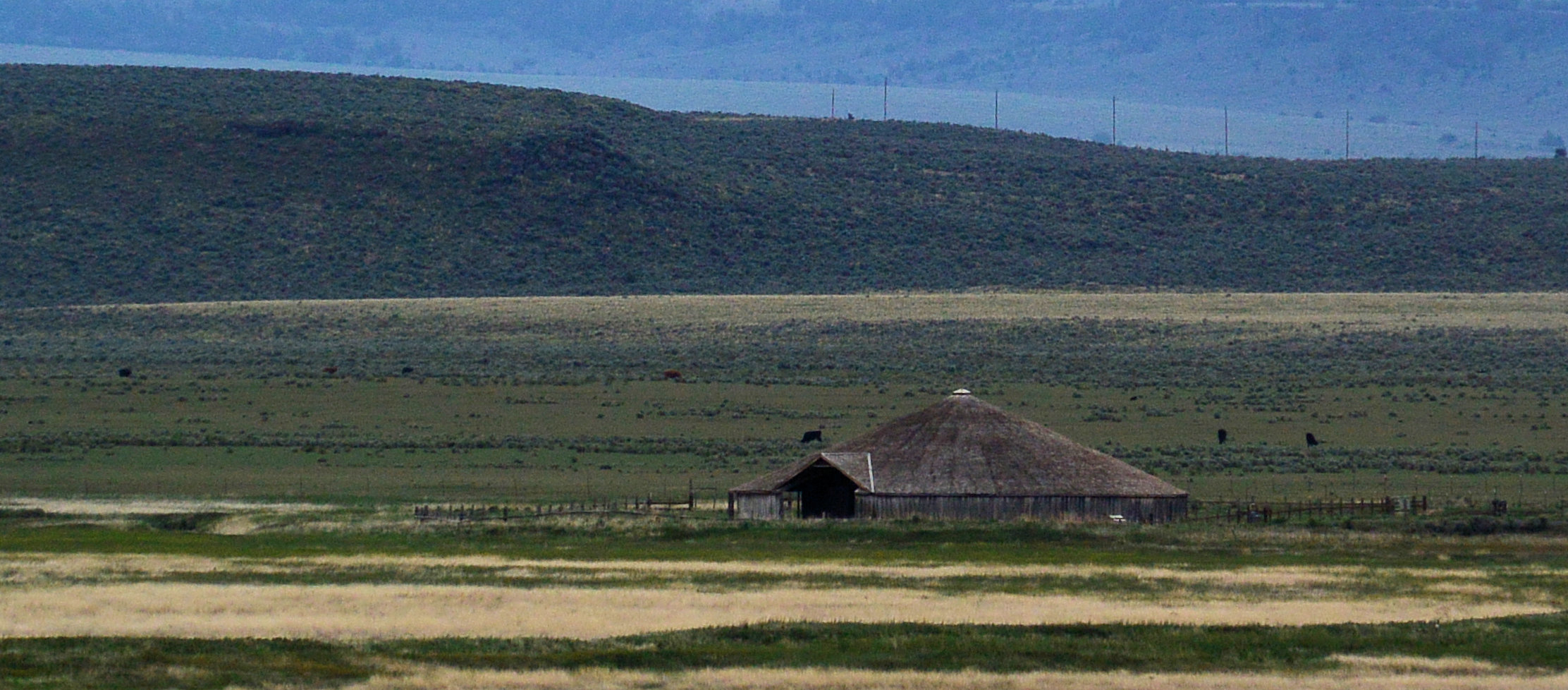
The construction is a marvel of “heavy duty”, with huge lava-rock walls and massive wood beams throughout.
The local mud-dauber swallows found a huge shelter under the capacious roof.
The state (and to a considerable extent the Jenkins ranch) help keep the old building in good condition. But unfortunately, the old barn looked like a free lumber yard to too many people. Jenkins ended up building the Visitor Center, in part, to help dissuade vandals seeking free loads of barn wood. Today, the old round barn shows visitors how things could be built, in real style, “back in the day”. Dick will be helping to orchestrate a new set of display boards at the barn; in the meantime, check out the website at www.roundbarn.info.
The Visitor Center emulates the same construction motif as the Round Barn, and adds some modern flair (and merchandise). Now I have to say, normally I don’t do much reporting on visitor centers, for they are uniformly bland, full of literature racks and often under-educated summer employees. But this place is a world apart, and deserves much more than honorable mention.
The word “eclectic” just doesn’t do it justice. A small museum, a pristine doll collection, horse-hair jewelry and belts. A fantastically diverse book store, with extensive sections on the American West, and cooking. For those of us who like to pack a little firepower, concealed-carry vests and purses, in fine hand-crafted leathers. Outdoor wear, basic drugstore stuff, hand-made knives. Wooden puzzle-models for the kids – – – I’m sure I’ve missed many categories. A wonderful place to just wander through and shop for that thing you can’t live without.
Did I mention the clean rest rooms (unisex thank you), free coffee, and that warm-and-cozy feeling?
Next morning, we woke up to an intermittent rain-patter on the roof and a variety of songs and calls from the local bird population. This area is very popular with birders, and more than 330 species have been sighted. As I stepped out the door, I was treated to a pair of Canada geese ripping by at Mach speed above the desert sage. “Honk, honk!” — what a lovely wake-up call.
We un-hooked Ralph and started exploring the area. There was a lot to see, albeit dimmed down by the dark skies. The Happy Valley loop was our first foray, taking us through gorgeous ranch lands, surrounded by the endlessly varied terrain of this highly volcanic region. Everywhere you look, the land rises and falls, swollen, buckled, broken, and immolated by lava eruptions and flows. This was truly one of the most beautiful desert landscapes we’d ever seen, and we were in awe of its majesty with every turn in the road.
We’ve spent a lot of time in the desert southwest, and we truly love the vast open spaces. But I have to say that this is some of the most exquisite desert land in our experience. Here’s a storm-backed view of the terrain looking southeast towards Steen’s Mountain (lost in the clouds). The near water is a stock pond, and the land is a combination of private ranch land and BLM land. Lava flows and old cinder cones are barely covered by the sparse desert vegetation — a “nakedness” of the landscape that is one of the endearing features of desert travel. The desert seldom wears gowns and suits and overcoats; we seldom find it dressed in much more than bikinis and jockey shorts. It’s geologically alluring.
Spring foaling was good this year, and lots of youngsters are evident among the range herds.
A young mule deer sprinted across the road as we rolled along.
Out in the Malheur Wildlife Refuge, the Overlook gave us a slightly elevated view of the marsh area. We learned from the signage that these areas take a lot of management (water control, invasive species, etc.)
We saw a smattering of birds, but not a lot on this cloudy afternoon. Mornings or evenings would be better of course. We saw many that were too far to photograph — redwing and yellow-head blackbirds, coots, several different duck species. Some Canada geese and a feeding male pheasant stayed close enough to snap a few shots.
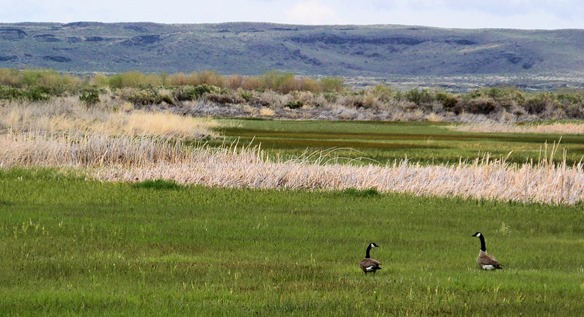
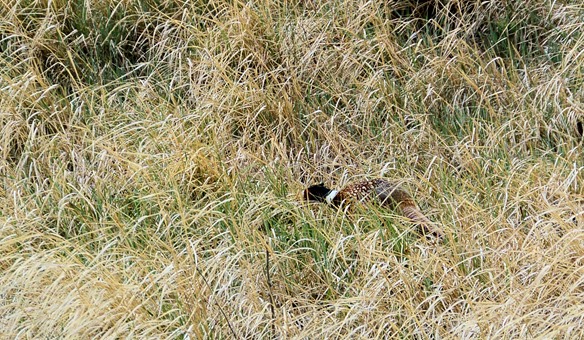
We left the Refuge and headed over to Diamond Crater “Outstanding Natural Area” (ONC). I have absolutely no idea how these names are conjured up. But outstanding it is – – a series of lava craters of varying types and dispositions, all clustered within a six-mile radius or so. There’s very nice signage at the edge of the first crater off the road, with excellent explanations of the formations and the nature of the lava action that caused them.
This one is truly striking, a large collapsed-dome affair. The edge we walked around is severe, broken, harsh. Very difficult footing and too easy to twist an ankle or snap a leg bone. Some of the rocks are not stable and teeter when walked on. Yes, we were careful.
The next crater was more nondescript, but apparently home to this young antelope. He didn’t want our company so much, and he left.
Last crater in the series, this one must have had a relatively waterproof floor, because it contained a shallow, algae-coated pond which had obviously been in residence for some time. I wonder what mysterious organisms or animal life live in this isolated little ecosystem?
The Refuge and the Craters had pretty much filled up our day, and despite all the stormy weather we had a very nice “tour”. We popped up to Crane to top off Ralph’s gas tank, and headed back to the Visitor Center for another peaceful night. Tomorrow, we’ll head over to the Steen’s Mountain area and find some open-desert camping.
Friday night took us to Mann Lake, a primitive BLM camp on the eastern edge of Steen’s Mountain. You can see a map HERE. We were welcomed by a flock of white pelicans, some of whom had the breeding-season “bulge” atop their beaks. It’s vast, peaceful, quiet and beautiful, and we’ll stay here for at least a few days. Stay tuned.
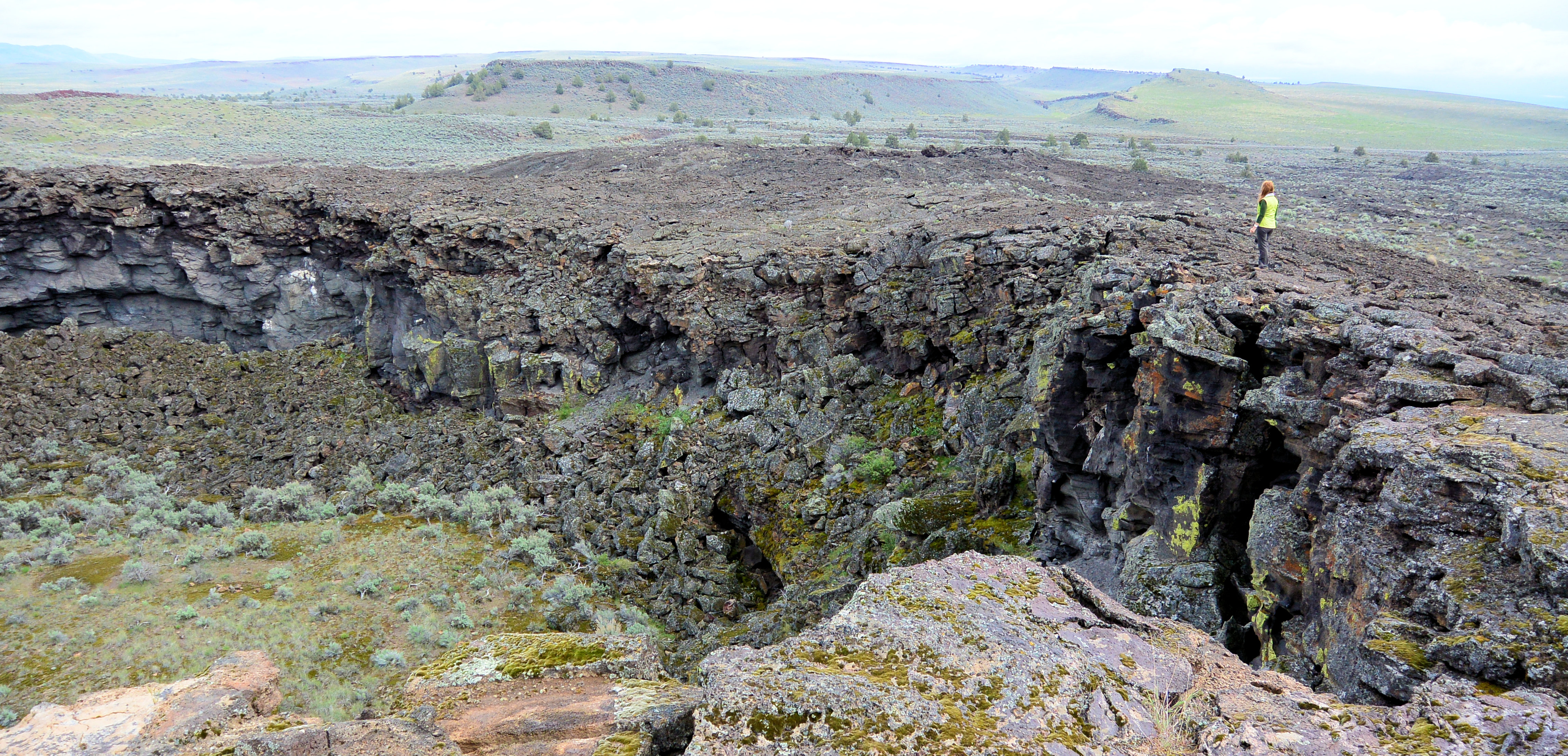

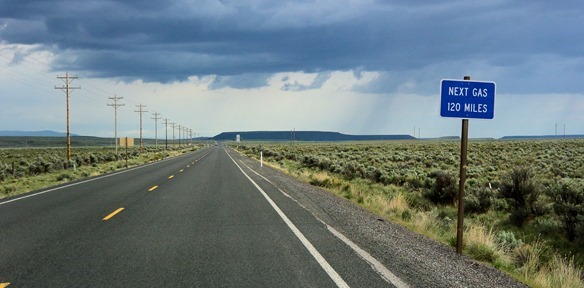
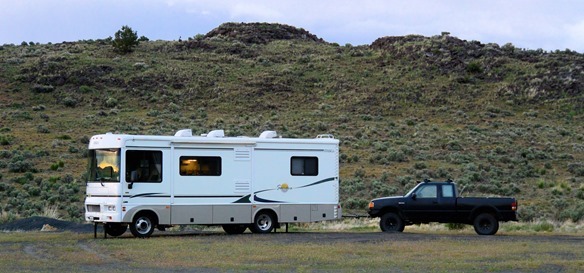
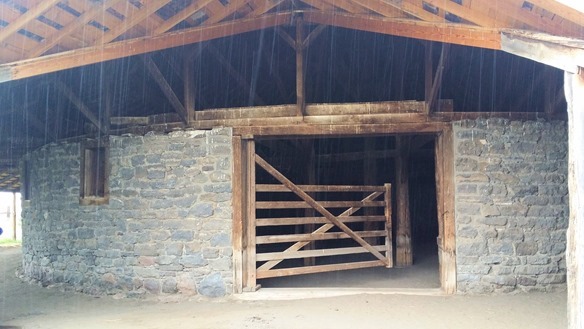
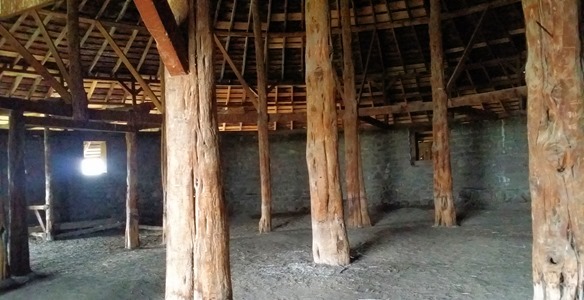
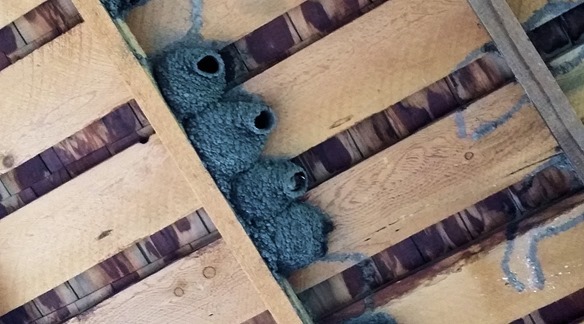
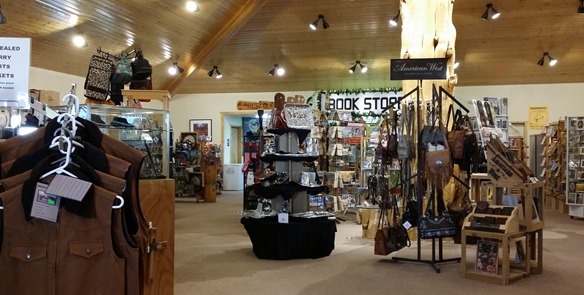
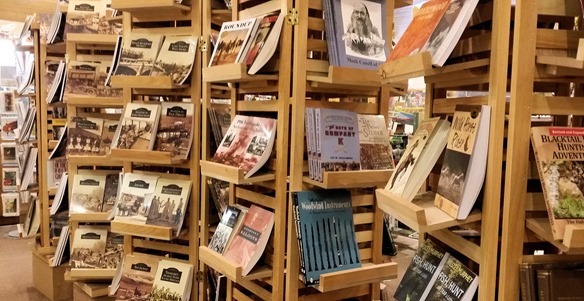
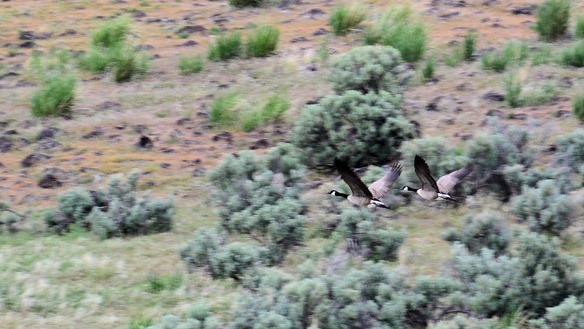
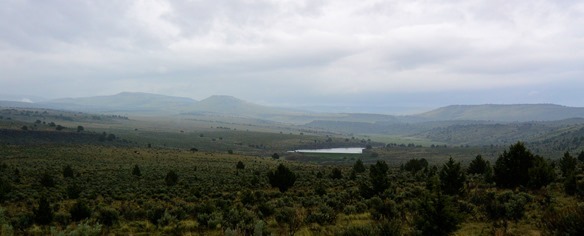
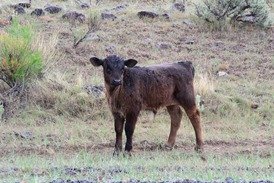
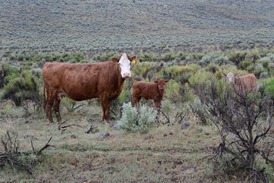

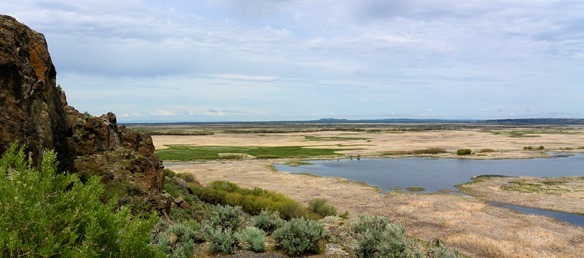
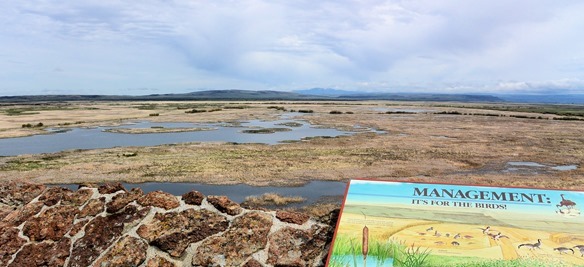
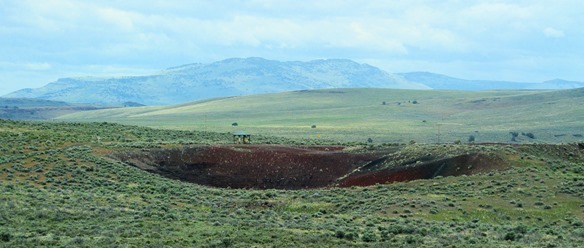
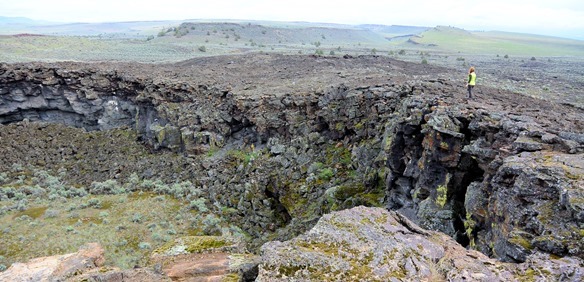
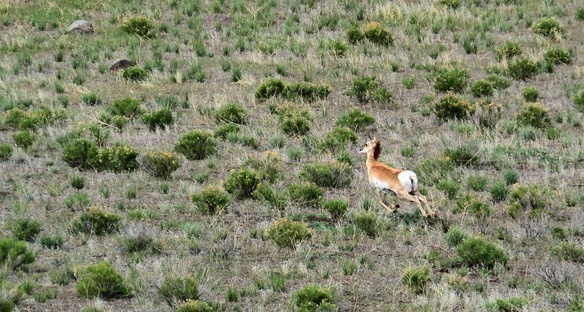
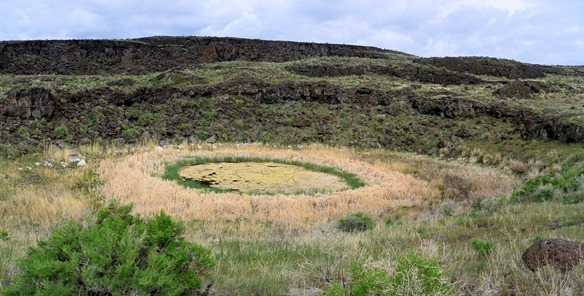
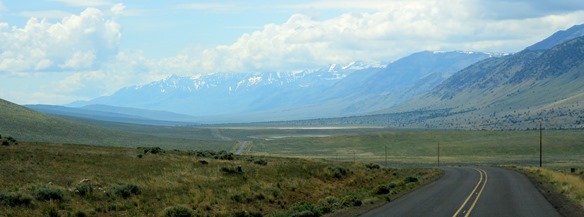
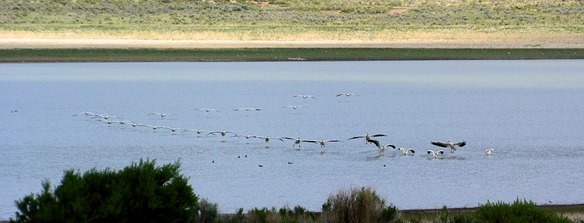
Eastern Oregon is beautiful, I backpacked in Eagle Cap Wilderness area five days and didn’t see another sole. I think those algae rings are called fairy rings! Great blog.
Yeah, we really liked it there. Northern Nevada too along SR-140. Had to leave early due to the trouble with Ralph, so we’ll be going back as soon as we can (and the weather isn’t too hot).
Great report! I love that part of my home state!!!
Nice time of year to visit. I like how green it is and what an excellent banner picture you chose for the blog entry. We were in the Lassen area about 10 years ago in the summer: hot and windy. The lava caves were a great fantastic refuge from the heat.
Thanks. Love your commentary and pictures.